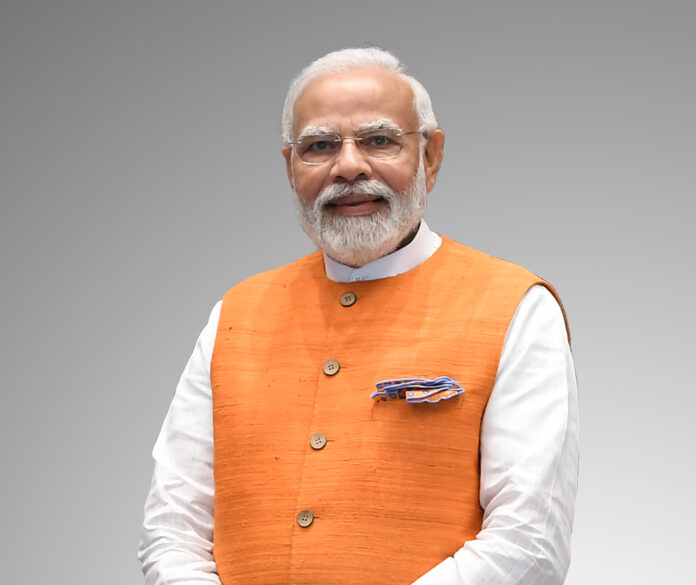India has officially established itself as a global smartphone manufacturing hub, with the world now recognising the country as a prominent “mobile exporter,” according to Prime Minister Narendra Modi. Speaking at the 8th edition of the India Mobile Congress (IMC) 2024 in New Delhi, PM Modi emphasised India’s remarkable journey in the mobile phone manufacturing sector. He shared that in 2014, there were only two mobile manufacturing units in the country, but today, the number has surged to over 200.
“We used to import most of our mobile phones, but now we are manufacturing six times more phones within our borders,” Modi stated, reflecting on the significant shift that has taken place over the last decade.
A Digital-First Vision: The Road to Domestic Manufacturing
Prime Minister Modi recalled the vision he laid out a decade ago—a digital-first India, with a goal of reducing the cost of mobile phones to make them accessible to all. He noted that this ambitious vision could only be achieved through domestic manufacturing. The launch of the “Make in India” initiative was a pivotal moment in realizing this dream. Over the past ten years, the government has introduced a range of policies to support this mission.
One of the key initiatives is the Production Linked Incentive (PLI) Scheme, which offers incentives to companies that manufacture products in India. Additionally, the government has provided various tariff incentives aimed at encouraging both local and international businesses to establish manufacturing units in the country. These efforts have not only boosted India’s domestic production but also made it an attractive alternative to China, particularly for companies seeking to mitigate rising geopolitical risks.
India’s Role in Global Smartphone Manufacturing: A Growing Force
India’s smartphone manufacturing capabilities have rapidly expanded, positioning the country as a promising alternative to China. Currently, 14% of the world’s iPhones are made in India, making it the largest producer of smartphones outside of China. Apple, one of the major players in the global smartphone market, plans to increase its manufacturing share in India to 24-25% by 2027-2028. This shift underscores India’s growing importance in the tech manufacturing ecosystem.
Other tech giants, such as Google, have also joined the trend, with the company manufacturing its high-end Pixel smartphones in India. This trend extends across the industry, with nearly every major smartphone manufacturer now producing devices within India’s borders.
Prime Minister Modi expressed optimism about the future of India’s mobile manufacturing sector, stating, “We now aim to provide the world with a fully Made-in-India phone, from the chip to the finished product.” This goal represents a significant leap forward for India’s manufacturing ambitions, and it is being supported by substantial investments in building a domestic semiconductor ecosystem.
The Semiconductor Challenge: India’s Next Frontier
While India’s success in smartphone manufacturing is clear, the country’s ambitions go beyond mobile phones. The government has set its sights on building a semiconductor manufacturing industry, a sector critical to the production of high-tech products like smartphones. However, India’s semiconductor industry is still in its infancy, and there are significant challenges ahead.
Currently, Taiwan is the dominant player in the global semiconductor market, holding around 44% of the world’s market share, followed by China, South Korea, the US, and Japan. India has a long way to go to catch up, but the government is committed to making strides in this area.
PM Modi has set an ambitious goal to boost India’s semiconductor sector and grow the country’s electronics industry from its current value of $155 billion to $500 billion by 2030. Achieving this target would position India as a major global player in high-tech manufacturing.
Collaboration Is Key: India’s Path to Semiconductor Success
However, experts caution that India may not yet have the expertise or infrastructure to develop a world-class semiconductor manufacturing industry independently. Analysts believe that collaboration with established players, particularly the United States, could be critical to India’s success in this space. By partnering with global leaders in semiconductor technology, India can accelerate its progress and develop the necessary capabilities to compete on the global stage.
In conclusion, India’s rise as a smartphone manufacturing hub marks a significant achievement in the country’s broader goal of becoming a global leader in high-tech production. With strong government support, strategic initiatives like the PLI Scheme, and increasing investments from global tech giants, India is poised to play a critical role in the global manufacturing landscape. As the country embarks on its next challenge—developing a robust semiconductor ecosystem—the coming years will determine whether India can achieve its ambitious targets and cement its place as a major player in the global tech industry.

